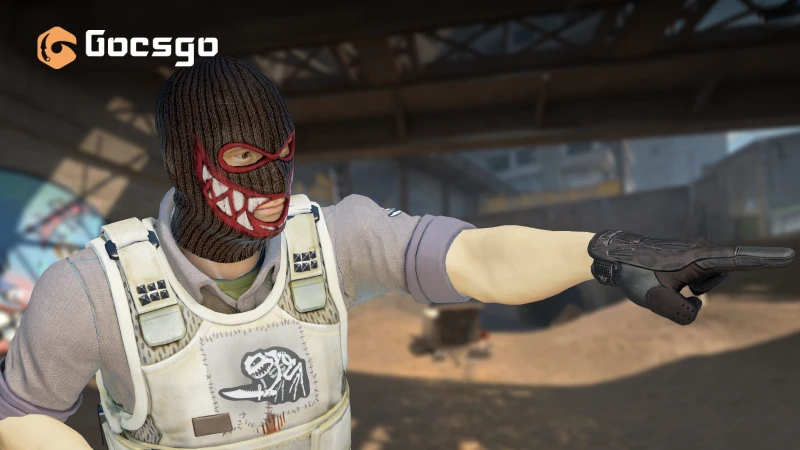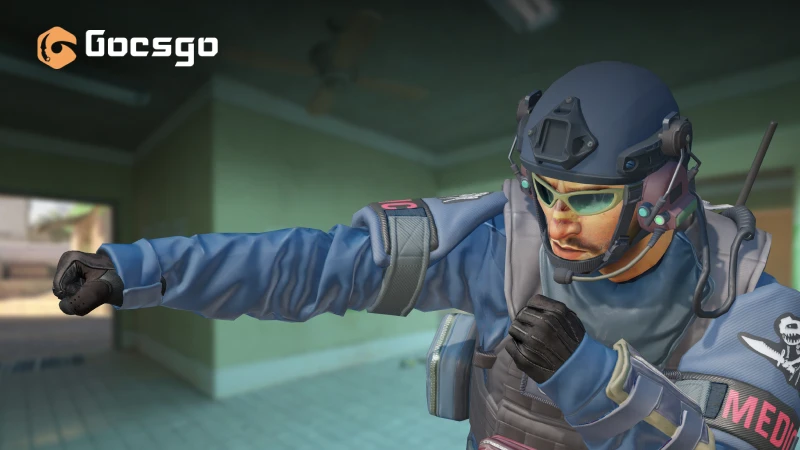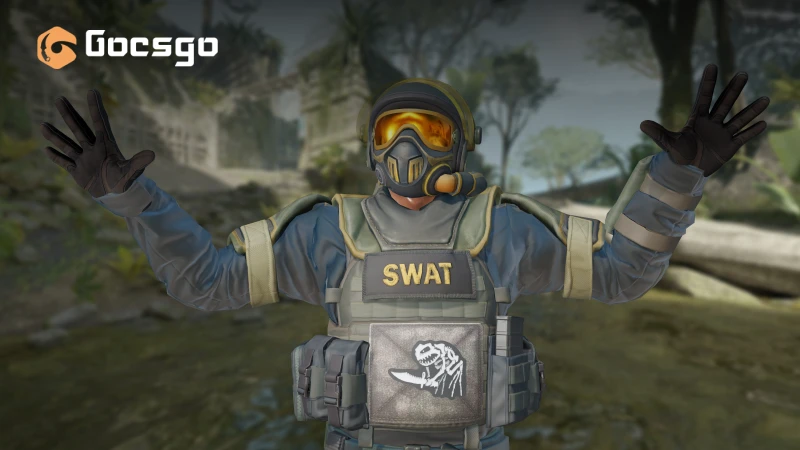In CS2, Bayonet Frog Patch is a smooth and stylish knife animation technique. It not only improves the feel of knife fighting, but also makes the player’s operation more enjoyable. To master this technique, you need reasonable game settings and continuous practice.
This article will introduce the basics of Bayonet Frog Patch, the best settings, and practical practice methods to help you quickly get started and improve your knife skills.
1. What Is the Bayonet Frog Patch in CS2?
In CS2, mastering movement is a key factor that separates casual players from those who stand out. The Bayonet Frog Patch is a smooth and stylish knife animation technique that players use to enhance their in-game movement while showing off their bayonet skins. It’s not just a flashy trick—this animation can help with fluidity in close combat or simply add flair to your knife play.
The term “frog patch” originally comes from the way the knife’s movement resembles a frog’s leap—quick, clean, and rhythmic. Specifically, it’s a manipulation of the bayonet knife animation that results in a unique flick or “patch” effect, often tied to the timing of swings and cancels. Compared to regular knife swings, the frog patch appears more natural and polished, making it a favorite for knife enthusiasts in both CS:GO and CS2.
2. Best CS2 Settings for Smooth Bayonet Frog Patch Execution
Getting the Bayonet Frog Patch right depends a lot on your CS2 settings. Precision in movement and timing comes down to a mix of viewmodel adjustments, sensitivity, and specific console commands. Here’s how to set yourself up for success.
Viewmodel Settings
Viewmodel controls how your knife looks on the screen. Adjusting it properly makes it easier to time the frog patch swings and flicks. Here are some recommended settings:
viewmodel_fov 68
viewmodel_offset_x 2.5
viewmodel_offset_y 2
viewmodel_offset_z -2
These settings allow you to position your bayonet in a convenient and clear position without affecting your vision.
Mouse Sensitivity
Sensitivity plays a huge role. Too high, and you’ll overshoot your movements; too low, and you might miss the timing window. A common approach is to set your mouse sensitivity between 1.5 and 2.5 (depending on your DPI). If you use 400 DPI, a sensitivity of around 2.0 is a good starting point.
Console Commands for Animation Fluidity
You can also improve your frog patch consistency with these console tweaks:
cl_interp 0
cl_interp_ratio 1
cl_cmdrate 128
cl_updaterate 128
These commands reduce input lag and ensure smoother animations, which is essential for timing your flicks perfectly.
Crosshair Settings
Although the crosshair setting is not directly related to the frog jump, a simple and clear crosshair can allow you to focus more on the rhythm of movement and timing. Generally speaking, a small dot or less conspicuous crosshair is more suitable.
After adjusting these settings, you will find that your muscle memory is easier to build, and the frog jump action can be completed more steadily and naturally.

3. How to Practice the Bayonet Frog Patch Consistently
Practice is the backbone of mastering any skill in CS2, and the Bayonet Frog Patch is no exception. Here’s a step-by-step guide to help you build muscle memory and perfect this trick.
Use Dedicated Training Maps
Maps like “training_knife_master” and “ks_aim” are excellent for practicing knife movements, including the frog patch. These maps let you focus on flick timing without pressure.
Step 1: Get Comfortable with Basic Knife Flicks
Before diving into the frog patch, make sure you can perform smooth, consistent knife swings. Focus on keeping your movements tight and deliberate.
Step 2: Break Down the Frog Patch Movement
The frog patch involves swinging the bayonet with a particular rhythm and quickly resetting the animation by canceling or switching weapons momentarily. Watch tutorial videos to understand the timing visually.
Step 3: Use Practice Commands
Run these commands to facilitate practice sessions:
sv_cheats 1
mp_roundtime_defuse 60
mp_free_armor 1
mp_buy_anywhere 1
They give you more freedom to experiment with movement and timing without game pressure.
Step 4: Practice Daily in Short Bursts
Dedicate 15-20 minutes daily to frog patch drills. Short, frequent practice sessions help develop muscle memory faster than long, inconsistent runs.
Step 5: Record and Analyze
Use CS2’s demo recorder to capture your frog patch attempts. Watching your game videos can help you see clearly what you did not do well enough and what details can be optimized.
If you stick to this methodical practice method for a long time, it will not only improve your feel and stability, but also make you more confident in actual combat and perform the bayonet frog jump more smoothly.

4. Common Mistakes Players Make When Learning the Frog Patch
Learning the bayonet frog jump can be frustrating if you don’t practice it correctly. Many players fall into some common pitfalls that not only slow down their progress but also cause them to jump unsteadily. Here are a few common pitfalls that you should pay special attention to:
Mistake 1: Rushing the Flick
The frog patch requires timing. Swinging too fast or trying to force the flick leads to jerky, unnatural movement. Take your time to sync your mouse movement with the animation.
Mistake 2: Incorrect Viewmodel Settings
Using default or poorly configured viewmodels makes it hard to see the knife’s position clearly, throwing off timing. Adjust your viewmodel as explained above.
Mistake 3: Ignoring Sensitivity Optimization
Sensitivity that’s too high causes overcorrection; too low makes you sluggish. Find a balanced setting and stick with it during practice.
Mistake 4: Not Practicing Consistently
Infrequent practice is the biggest killer of muscle memory. The frog patch looks smooth only when it’s natural and automatic.
Mistake 5: Overlooking Animation Cancels
Some players don’t utilize weapon switching or other animation cancels correctly, leading to longer delays between swings. Learn to use these cancels effectively to keep the frog patch flowing.
Mistake 6: Skipping Warm-Up
Jumping straight into the frog patch without warming up your aim and flicks can make your movement clumsy. Always warm up with basic flick drills first.
Avoiding these mistakes speeds up your progress and ensures that your frog patch looks polished and professional in every match.

5. Top Knife Skins That Look Great With the Bayonet Frog Patch
The Bayonet Frog Patch doesn’t just feel good—it looks incredible, especially when paired with the right skins. Here are some bayonet skins that truly shine when performing the frog patch in CS2:
1. Bayonet Fade
This skin’s vibrant gradient of pink, orange, and yellow reflects light beautifully during the flick. The fade effect creates a mesmerizing visual, making every frog patch swing a highlight.
2. Bayonet Lore
With its intricate gold filigree and dark background, the Lore adds an air of prestige. The frog patch accentuates its elegant design, showing off fine details in each movement.
3. Bayonet Marble Fade
The swirls of red, blue, and yellow marble make this skin a standout. When combined with smooth frog patch swings, the colors blend into fluid streaks, captivating onlookers.
4. Bayonet Doppler (Sapphire & Ruby)
The deep blues and rich reds of Doppler phases amplify the frog patch’s flicks. The glossy finish catches light dynamically, creating a premium feel.
5. Bayonet Black Laminate
If you like a low-key and textured style, Black Laminate would be a good choice. Its dark and smooth appearance is very visually coordinated with the neat movements of frog jumping.
Choosing a favorite knife is not only for the operating feel, but also a reflection of style. Whether you want to show off a rare skin or simply want to make the action look more handsome, these bayonets can help you do it.
If you want to know where you can get the knives that match the Bayonet Frog Patch, you can try to go to Gocsgo to open the case. There are various cases you want to open, as well as daily cases and new member benefits, etc. You can try it.
Final Thoughts
The key to mastering the Bayonet Frog Patch in CS2 is to have the right game settings, practice hard, and avoid some common mistakes. As long as you keep training and adjust the settings, this knife move will become very smooth, like a part of your operation. Paired with a suitable Bayonet skin, not only will the knife skills be more handsome, but the overall operation will also be more professional.
If you want to stand out in CS2, the Frog Patch is a skill that must be mastered. It not only tests your skills, but also has personality. Start by adjusting the settings and practice more, and your knife skills will improve significantly.
FAQs
Q1: What is the Bayonet Frog Patch in CS2?
The Bayonet Frog Patch is a smooth knife animation technique in CS2 that enhances player movement and visual appeal. It’s achieved by manipulating the bayonet’s swing timing to create a fluid, rhythmic flick.
Q2: How do I set up my CS2 config for the Bayonet Frog Patch?
Adjust your viewmodel settings for better knife visibility, fine-tune your mouse sensitivity, and use console commands like cl_interp 0 and cl_interp_ratio 1 to reduce lag and improve animation smoothness.
Q3: Which Bayonet skins look best when using the frog patch?
Bayonet Fade, Lore, Marble Fade, and Doppler are top skins for the frog patch. Their vibrant colors and glossy finishes highlight the flick animations beautifully.

